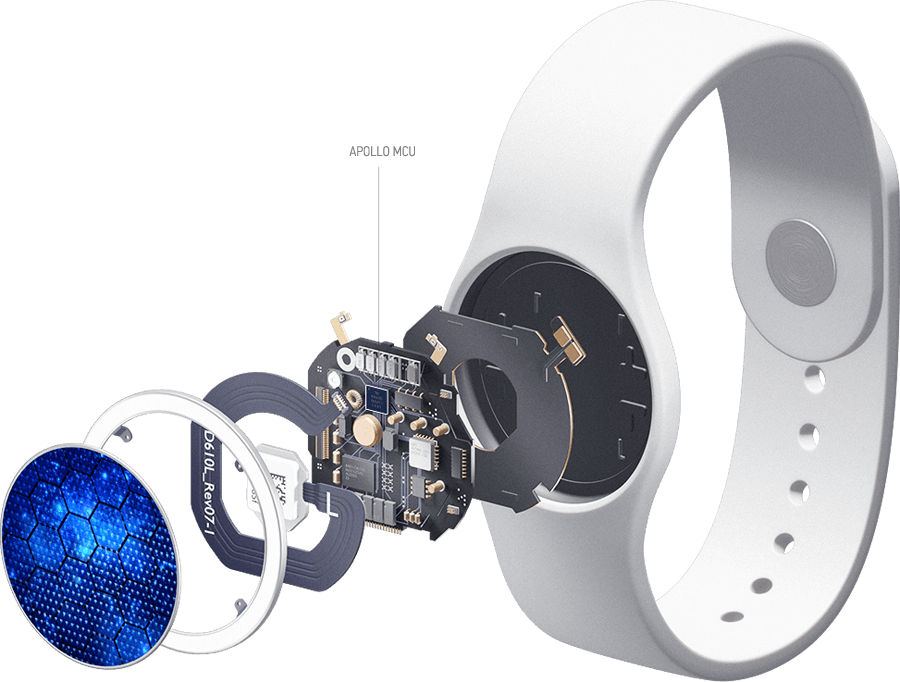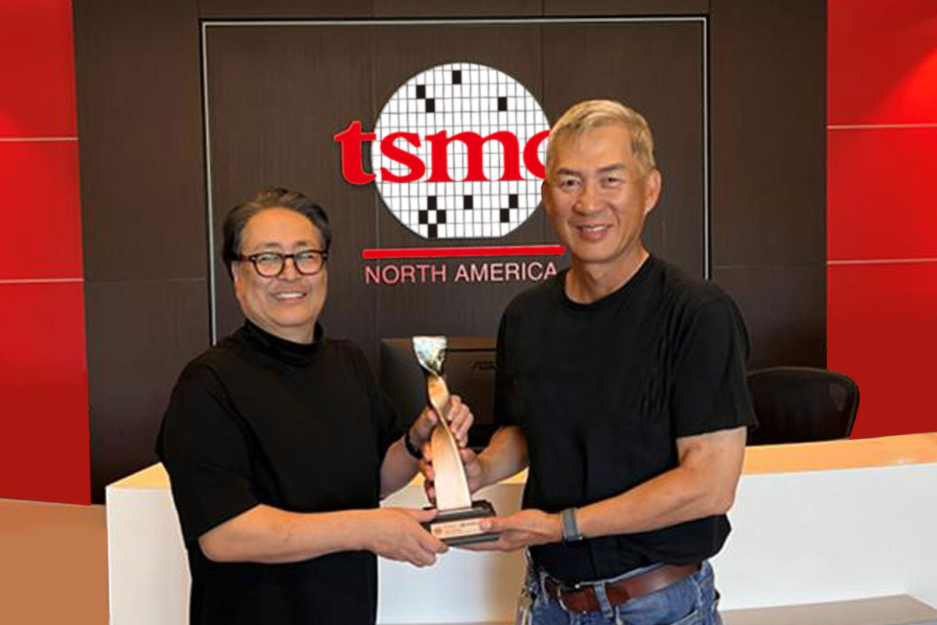apollo2 for Dummies
apollo2 for Dummies
Blog Article

Run with the Ambiq Apollo3 Blue microcontroller (MCU), the token is often a Bodily unit utilizing Bluetooth® signals to trace Other people close by. Other than remaining exact, secured, Risk-free, and in a small form variable, the Apollo3 Blue provides the required functionality with no sacrificing battery existence. The token is expected to past four to 6 months without a recharge.
Ambiq has aided major companies around the world produce products which past months on one cost (as an alternative to days), whilst offering a greatest attribute set in compact industrial models.
The Apollo4 Blue SoC is definitely an extremely-very low electricity, very integrated blended-signal SoC designed for battery-run devices. The SoC gives a significant improvement in processing functionality and extremely built-in electrical power management and audio abilities towards the Apollo SoC products family members.
With a subscription-absolutely free encounter, the Luna Ring Application features tailor-created insights into each day activity functionality. The engineering marvel is crafted to make certain precision with crafted-in algorithms for enhanced health tracking.
Singapore-based mostly semiconductor alternatives developer Ambiq has achieved a big milestone by powering over 200 million IoT devices earlier this 12 months. Renowned for its ultra-very low-power options that provide a multifold boost in Power efficiency, Ambiq is now set to increase its technological know-how design center in Singapore, which was set up in April previous yr.
“Creating about the Highly developed technologies from Arm and TSMC, our Apollo4 SoC family members presents the right combination of increased procedure capacity with noticeably lessened electric power intake for all battery-powered endpoint devices.”
NASA's Apollo Web page Variety Board introduced five prospective landing web pages on February 8, 1968. These have been the results of two years' well worth of experiments according to substantial-resolution images of the lunar surface through the 5 uncrewed probes of your Lunar Orbiter program and details about floor ailments furnished by the Surveyor program.
Sensible lights methods may even be setup to turn on and off mechanically based on user preferences or schedules.
But it really wasn’t prolonged prior to this system fell out of favour. With spacecraft 014, the spacecraft for Apollo two, falling terribly behind, quite a few began questioning the worth of traveling a 2nd Block I mission. There wasn’t far too much the agency could master from a Block I flight that it could then implement to the Moon-certain Block II missions. Besides, NASA had extensive abandoned the exercise of duplicating missions; not given that Gus Grissom adopted in Al Shepard’s suborbital contrails in 1961 had NASA duplicated a mission.
A proprietary calibration algorithm to digitally tune the RC and XT oscillator frequency with accuracy as little as 2 ppm.
The test was completed on October 13,[20] which means that it took a few months instead of the expectation of per week or marginally above. With entire world consideration about the start, NASA community relations head Julian Scheer brought the skeptical inquiries through the media as as to whether Apollo 4 would ever fly to the attention of NASA Administrator James E. Webb, leading to a heated meeting in which Webb said he would announce the start day when he planned to.[21]
Apollo 4 was an "all-up" take a look at, that means all rocket stages and spacecraft ended up completely purposeful about the initial flight, a primary for NASA. It had been The 1st time the S-IC 1st stage and S-II 2nd stage flew.
Ambiq’s mission would be to develop the bottom-electricity semiconductor answers that enable clever devices in all places Apollo 2 to push a healthier, cleaner, and even more productive environment.
Furthermore, it is going to aid the growth of its present group, that focuses on producing future-technology semiconductor technology built upon its proprietary platform Location®, Subthreshold Electric power Optimized Technological know-how.
Get Smart. Use Less Energy.
Ultra-low power SoCs for IoT endpoint devices
that demand complex operations
and longer battery life.
✍ Ambiq® is committed to further improve the quality of life by enabling the intelligence of endpoints while further reducing carbon footprints. Ambiq – your partner in endpoint intelligence.
✯✯✯Based in Austin, San Jose, Hsinchu, Shenzhen, and Shanghai, our leadership and management teams consist of advocates, builders, enthusiasts, entrepreneurs, explorers, incubators, inventors, pioneers, protectors, thinkers, and visionaries. With a diverse spectrum of experiences and skillset, we came together and united with one goal to enable the true Internet of Things where the battery-powered endpoint devices can truly be connected intuitively and intelligently 24/7.
Ambiq Wins the Demo of the Year Award at 2023 TSMC Technology Symposium
September 7, 2023, Austin, TX – Ambiq®, a leading developer of ultra-low-power semiconductor solutions that deliver a multifold increase in energy efficiency, was awarded the Demo of the Year Award by TSMC as a participant of the Innovation Zone at the 2023 TSMC North America Technology Symposium.
Ambiq Wins the Demo of the Year Award at 2023 TSMC Technology Symposium
During the April event, Ambiq showcased various product design wins using TSMC’s 22nm technology in wearables, digital health, smart home, Industrial IoT, pet trackers, and retail segments, with industry-leading energy efficiency. Ambiq also featured two live demos emphasizing its leadership in enabling endpoint AI with its HeartKit™ for remote patient monitoring and its graphics display capabilities for a vivid user interface. 
TSMC pioneered the pure-play semiconductor foundry business model when it was founded in 1987, helping startup companies accelerate their innovations by providing access to the industry’s leading process technologies and manufacturing capacity. Since 2021, TSMC has expanded that mission with an Innovation Zone at its worldwide Technology Symposiums, highlighting how TSMC partners with startup companies to enable cutting-edge products from various applications, including high-performance computing, communication, automotive, IoT, and consumer segments.
“We’re grateful to TSMC and our booth Ambiq singapore visitors for allowing us to share our energy-efficient technology and processor solutions with them,” said Ambiq’s CEO, Fumihide Esaka. “We’re moving towards an exciting frontier of AI becoming more engrained with our daily lives. With that vision on the horizon, we will continue to develop innovative and first-of-its-kind ultra-low-powered solutions that keep innovation and sustainability in mind. 
Ambiq’s mission is to develop the lowest-power semiconductor solutions to enable intelligent devices everywhere by developing the lowest-power semiconductor solutions to drive a more energy-efficient, sustainable, and data-driven world. Ambiq has helped leading manufacturers worldwide develop products that last weeks on a single charge (rather than days), while delivering a maximum feature set in compact industrial designs. Ambiq’s goal is to take Artificial Intelligence (AI) where it has never gone before in mobile and portable devices, using Ambiq’s advanced ultra-low power system on chip (SoC) solutions. Ambiq has shipped more than 200 million units as of March 2023.
Ambiq Designs Low-Power for Next Gen Endpoint Devices
Ambiq’s VP of Architecture and Product Planning, Dan Cermak, joins the ipXchange team at CES to discuss how manufacturers can improve their products with ultra-low power. As technology becomes more sophisticated, energy consumption continues to grow. Here Dan outlines how Ambiq stays ahead of the curve by planning for energy requirements 5 years in advance.
Ambiq Highlights From Embedded World 2024
Facebook | Linkedin | Twitter | YouTube